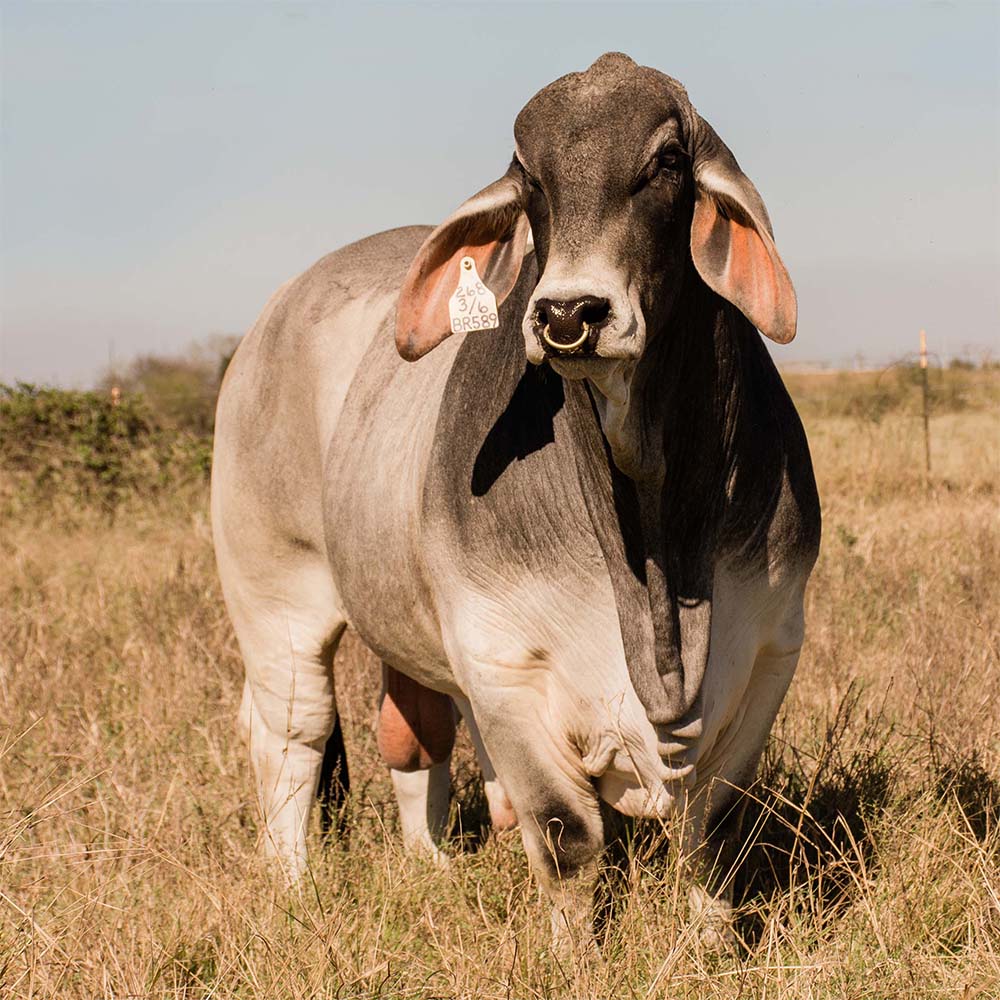Why Brahman
Looking to add a boost to your commercial herd or expand into raising high-quality American Brahman cattle? Here are reasons to consider this unique breed.

American Brahman cattle are unmatched in their ability to generate maximum hybrid vigor (heterosis) when crossed with other breeds, making them a game-changer in today’s beef industry.
The result? The best of both worlds—enhanced performance and increased profit potential.
One of the most popular crossbreeding practices in the U.S. is mating Brahman bulls with European or English breed cows. The resulting Brahman F-1 calf is highly sought after by cattlemen, whether for replacement females or feeders in the feedlot.
Decades of research confirm that crossing Brahman with British or Continental breeds delivers higher levels of heterosis compared to British or Continental breeds crossed with one another.
It’s no surprise that American Brahman cattle are often called “Crossbreeding’s Common Denominator.”

Environmental Adaptability

Heat Tolerance
American Brahmans are genetically designed to withstand temperature extremes, making them the most heat-tolerant breed in the cattle industry.
How do they thrive in hot climates?
- Short, thick, glossy hair reflects sunlight, allowing Brahmans to graze even in the midday sun.
- Their abundance of loose skin increases body surface area, enhancing cooling efficiency.
- Unlike many other breeds, Brahmans have the unique ability to sweat freely, a key factor in their heat tolerance.
What about cold weather?
In cooler climates, Brahmans adapt just as well. They grow a protective covering of long, coarse hair, with a dense, downy undercoat beneath for added insulation. When temperatures drop, their skin contracts, thickening the hide and increasing hair density, which helps retain body heat.
This adaptability makes Brahmans the ideal breed for environments with extreme temperature fluctuations.

Gain Efficiency & Carcass Quality
The Brahman breed’s success extends far beyond the pasture, excelling in the feedlot as well.
Hybrid calves and those from Brahman F-1 cows are prized for their rapid growth and fast gains. Research consistently shows that Brahman-influenced calves outperform their counterparts, often producing more weight per day of age than most other breeds.
Brahman-cross calves are especially desirable in hot and humid climates, where they maintain superior feed efficiency, even when European and British breeds experience performance declines. Their ability to finish strong offers a distinct economic advantage for producers.
In addition to efficiency, Brahman-influenced carcasses are known for their high cutability, producing high-yield carcasses with minimal fat—a winning combination for both feedlot operators and beef consumers.

Maternal Ability & Fertility
American Brahman females are celebrated for their maternal excellence, longevity, and fertility, consistently producing calves year after year.
Many commercial producers prefer the Brahman F-1 female, fondly called the “Queens of Cow Country”, due to her bred-in adaptability, enhanced milk production, and long productive lifespan. Known for breeding back quickly, she also passes her fertility traits on to her offspring.
In addition to being highly fertile, the Brahman female is both thrifty and efficient, repeatedly proving her ability to wean fast-growing calves with fewer inputs.
Thanks to their versatility and genetic strengths—including heat tolerance, disease and pest resistance, and environmental adaptability—Brahman females are a valuable addition to herds across the globe.
